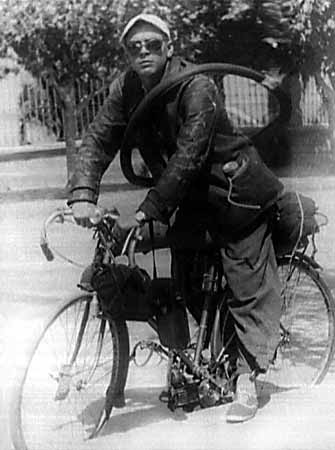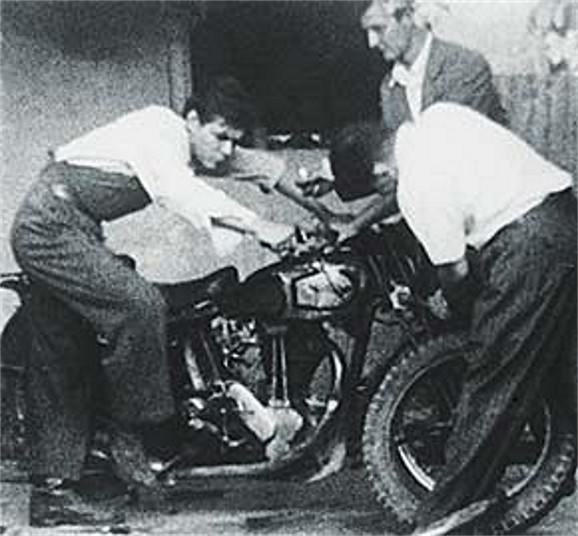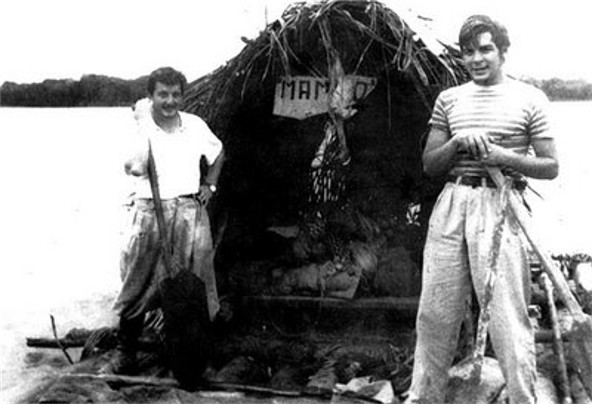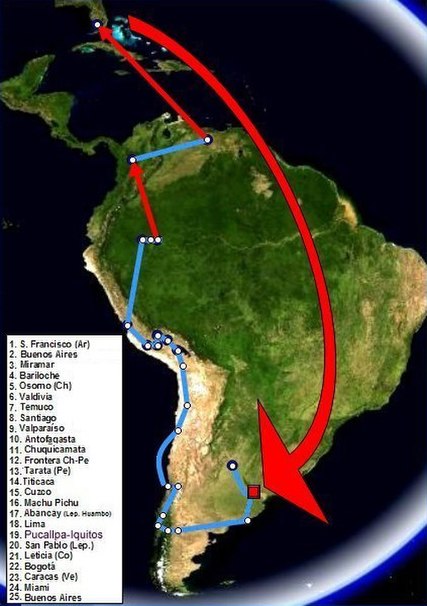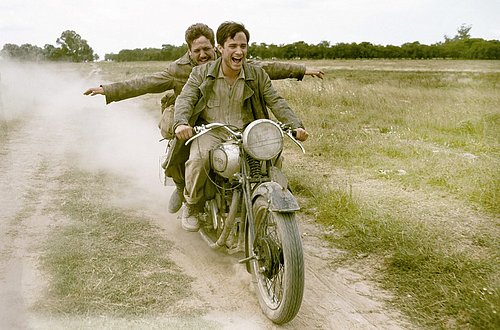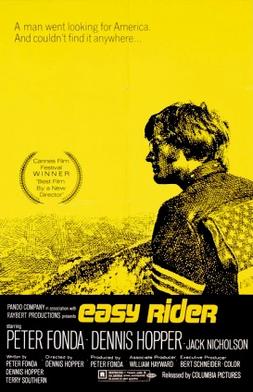Paul Chai
The Sydney Morning Herald

Laidback: A busy night in Hanoi's old town. Photo: Alamy
Hanoi's best bars serve a winning mix of art, music and cocktails.
Charming retro boltholes, creative cocktail joints and great bar food - Hanoi has plenty to do when the sun slinks away behind the city's ever-present haze.
The northern Vietnamese city was dealt a blow last year when the much-touted new art-and-bar space Zone 9 - a south-east Asian take on London's Shoreditch - was closed after a fatal fire. But when one bar closes, several more open or relocate. New laneway bars are popping up in Tay Ho, Zone 9 favourites are moving to new digs, and the city's bia hois continue to slake the thirst of the city.

Dangling glass bottles at Bar Betta. Photo: Vegan Beats/Google
Here is a selection of the hippest, highest and handsomest places to quench your thirst.
Read more: http://www.smh.com.au/travel/hanoi-cocktails-of-the-city-20140618-3acn3.html#ixzz35K7hasU6
FOR COCKTAILS
Bar Betta (34c Cao Ba Quat, Ba Dinh) is a rabbit warren of rooms stuffed with old gramophones, tin toys, walls plastered with old vinyl - and Edith Piaf warbling in the background. It's lovingly retro, like many of the cocktails on offer. Or you can choose from the specials.

Summit Lounge at Sofitel Plaza.
A Litchi Rose comes on like a floral boxing glove, the wine selection is one of the best in town, and by day drinkers have their laptops for companions. But this Hanoi hipster haunt is more play than work in the evening. Climb the stone staircase, through the forest of dangling glass bottles, to discover the rooftop party.
Tucked away in a West Lake laneway, Do Luych (19B Ngo 12, Dang Thai Mai Street, Tay Ho) is full of mismatched furniture - the CD cabinet is a shower cubicle - and has a classic cocktail list (the whisky sour is a standout).
Drinkers can choose to watch the bartenders work in the front bar in among the coloured lights, fake trees and a baby grand piano, or chill in the tiny back garden.
It's a relaxed, arty space with jazz on the stereo, where locals can buy a bottle of spirits to keep behind the bar and anyone can grab a banh mi when hungry.
Best described as warehouse-chic, Tadioto (24B Tong Dan Street; tadioto.com) is a bit of a blank canvas, an alternative art space that evolves to host readings, gallery openings and art events, all with the backing of a well-stocked bar and competent bar staff. It recently moved near the Opera House after its Zone 9 outlet was closed down.
FOR FOOD
Bare bricks and ottomans are packed three storeys high at 88 Lounge (88 Xuan Dieu, Tay Ho) on the shores of Tay Ho. Behind a screen of live bamboo, waiters in crisp white shirts bustle around the large wooden tables and lush furnishings amid prison-grey concrete walls.
88 is a sophisticated affair with a big wine list and a small-but-spot-on selection of food. Delve into a board of paper-thin cold cuts including salumi, sopressa and Serrano ham, with a side of olives, cherry tomatoes and cornichons; a cheese plate is piled generously high, and open sandwiches are served with fries and salad.
It's an expat crowd ,but it's new, bold and lots of fun.
Don's - A Chef's Bistro (16 Ngo 27, Xuan Dieu, Tay Ho; facebook.com/donsviet) is a popular rooftop bar, atop the fine diner of the same name.
This kitsch bar gives you a view of Tay Ho with neon lighting, up-lit glass tables and swivel cane chairs - as well as a live band. The crowd is friendly and fun, and Don's margarita is as lethal as Hanoi's traffic. Downstairs, the Canadian expat, chef and owner, Donald Berger, offers a quieter (and altogether bluer) space for those who would rather partake of dinner than drinks; his take on local rice paper rolls give the street vendors a run for their money.
FOR VIEWS
The Hanoi haze almost looks appealing 20 floors up with a pineapple ginger margarita in hand at the Summit Lounge (Sofitel Plaza Hanoi, 1 Thanh Nien Road, Ba Dinh). Rattan chairs, brightly coloured pillows and glowing lamps make a lounge of the balcony area, while inside boasts big couches.
And it's not the tequila talking - those really are giant swans gliding along Tay Ho (West Lake) as avid swan-boaters paddle around Chua Tran Quoc pagoda, said to be Vietnam's oldest. The tapas menu trots the globe, but go local with cha ca skewers, turmeric-covered fish pieces, or chargrilled lemongrass and chilli chicken.
Tucked away from the traffic, the Sunset Bar (Intercontinental Hanoi Westlake, 1ANghi Tam, Tay Ho; ihg.com) sits at the heart of the hotel's overwater rooms offering a commanding low-level view across the lake to Ba Dinh.
Tiki torches light your way along a bridge to a man-made island of rattan chairs, day beds and red lanterns. There's a barbecue in the corner, but most of the well-heeled crowd just grabs a seat and faces the waning light; then you get dive-bombing bats for company.
The signature drink is a Hanoi Breeze, a punch mix of lemongrass, fresh mint, dark and white rum, and a dash of soda.
FOR AUTHENTICITY
Taken en masse, bia hois (any street, anywhere) are the most popular places for a drink in the city. Plastic chairs so low they feel like practice for the squat toilets and similar kiddie-sized tables are about the only adornment to these no-frills beer bars but that's OK when your lager is ice-cold, fresh daily and cheap. It's a simple brew, low in alcohol and quite likely to run out - and it comes with some equally simple and fresh local food (though quality varies).
The writer travelled at his own expense.
TRIP NOTES
GETTING THERE
Malaysia Airlines has a fare to Hanoi for about $835 low-season return from Sydney and Melbourne including tax. Fly to Kuala Lumpur (about 8hr) and then to Hanoi (3hr 25min). See malaysiaairlines.com. Australians need a tourist visa for a stay of up 30 days.
EATING THERE
Street eats are the way to go, so grab a banh mi at streetside stalls andbia hois. For a sit-down meal in the old quarter, visit the venerable Cha Ca La Vong, 14 Pho Cha Ca, dinner from $40. The house special is fish, grilled at your table.
STAYING THERE
Just outside the city centre but close to the Tay Ho bar scene is InterContinental Hanoi Westlake, 1a Nghi Tam, Tay Ho, with rooms starting from $240. Do some tai chi by the outdoor pool, dine at Cafe du lac or indulge at the breakfast buffet. See ihg.com.
Read more: http://www.smh.com.au/travel/hanoi-cocktails-of-the-city-20140618-3acn3.html#ixzz35K7YagQq
The Sydney Morning Herald

Laidback: A busy night in Hanoi's old town. Photo: Alamy
Hanoi's best bars serve a winning mix of art, music and cocktails.
Charming retro boltholes, creative cocktail joints and great bar food - Hanoi has plenty to do when the sun slinks away behind the city's ever-present haze.
The northern Vietnamese city was dealt a blow last year when the much-touted new art-and-bar space Zone 9 - a south-east Asian take on London's Shoreditch - was closed after a fatal fire. But when one bar closes, several more open or relocate. New laneway bars are popping up in Tay Ho, Zone 9 favourites are moving to new digs, and the city's bia hois continue to slake the thirst of the city.

Dangling glass bottles at Bar Betta. Photo: Vegan Beats/Google
Here is a selection of the hippest, highest and handsomest places to quench your thirst.
Read more: http://www.smh.com.au/travel/hanoi-cocktails-of-the-city-20140618-3acn3.html#ixzz35K7hasU6
FOR COCKTAILS
Bar Betta (34c Cao Ba Quat, Ba Dinh) is a rabbit warren of rooms stuffed with old gramophones, tin toys, walls plastered with old vinyl - and Edith Piaf warbling in the background. It's lovingly retro, like many of the cocktails on offer. Or you can choose from the specials.

Summit Lounge at Sofitel Plaza.
A Litchi Rose comes on like a floral boxing glove, the wine selection is one of the best in town, and by day drinkers have their laptops for companions. But this Hanoi hipster haunt is more play than work in the evening. Climb the stone staircase, through the forest of dangling glass bottles, to discover the rooftop party.
Tucked away in a West Lake laneway, Do Luych (19B Ngo 12, Dang Thai Mai Street, Tay Ho) is full of mismatched furniture - the CD cabinet is a shower cubicle - and has a classic cocktail list (the whisky sour is a standout).
Drinkers can choose to watch the bartenders work in the front bar in among the coloured lights, fake trees and a baby grand piano, or chill in the tiny back garden.
It's a relaxed, arty space with jazz on the stereo, where locals can buy a bottle of spirits to keep behind the bar and anyone can grab a banh mi when hungry.
Best described as warehouse-chic, Tadioto (24B Tong Dan Street; tadioto.com) is a bit of a blank canvas, an alternative art space that evolves to host readings, gallery openings and art events, all with the backing of a well-stocked bar and competent bar staff. It recently moved near the Opera House after its Zone 9 outlet was closed down.
FOR FOOD
Bare bricks and ottomans are packed three storeys high at 88 Lounge (88 Xuan Dieu, Tay Ho) on the shores of Tay Ho. Behind a screen of live bamboo, waiters in crisp white shirts bustle around the large wooden tables and lush furnishings amid prison-grey concrete walls.
88 is a sophisticated affair with a big wine list and a small-but-spot-on selection of food. Delve into a board of paper-thin cold cuts including salumi, sopressa and Serrano ham, with a side of olives, cherry tomatoes and cornichons; a cheese plate is piled generously high, and open sandwiches are served with fries and salad.
It's an expat crowd ,but it's new, bold and lots of fun.
Don's - A Chef's Bistro (16 Ngo 27, Xuan Dieu, Tay Ho; facebook.com/donsviet) is a popular rooftop bar, atop the fine diner of the same name.
This kitsch bar gives you a view of Tay Ho with neon lighting, up-lit glass tables and swivel cane chairs - as well as a live band. The crowd is friendly and fun, and Don's margarita is as lethal as Hanoi's traffic. Downstairs, the Canadian expat, chef and owner, Donald Berger, offers a quieter (and altogether bluer) space for those who would rather partake of dinner than drinks; his take on local rice paper rolls give the street vendors a run for their money.
FOR VIEWS
The Hanoi haze almost looks appealing 20 floors up with a pineapple ginger margarita in hand at the Summit Lounge (Sofitel Plaza Hanoi, 1 Thanh Nien Road, Ba Dinh). Rattan chairs, brightly coloured pillows and glowing lamps make a lounge of the balcony area, while inside boasts big couches.
And it's not the tequila talking - those really are giant swans gliding along Tay Ho (West Lake) as avid swan-boaters paddle around Chua Tran Quoc pagoda, said to be Vietnam's oldest. The tapas menu trots the globe, but go local with cha ca skewers, turmeric-covered fish pieces, or chargrilled lemongrass and chilli chicken.
Tucked away from the traffic, the Sunset Bar (Intercontinental Hanoi Westlake, 1ANghi Tam, Tay Ho; ihg.com) sits at the heart of the hotel's overwater rooms offering a commanding low-level view across the lake to Ba Dinh.
Tiki torches light your way along a bridge to a man-made island of rattan chairs, day beds and red lanterns. There's a barbecue in the corner, but most of the well-heeled crowd just grabs a seat and faces the waning light; then you get dive-bombing bats for company.
The signature drink is a Hanoi Breeze, a punch mix of lemongrass, fresh mint, dark and white rum, and a dash of soda.
FOR AUTHENTICITY
Taken en masse, bia hois (any street, anywhere) are the most popular places for a drink in the city. Plastic chairs so low they feel like practice for the squat toilets and similar kiddie-sized tables are about the only adornment to these no-frills beer bars but that's OK when your lager is ice-cold, fresh daily and cheap. It's a simple brew, low in alcohol and quite likely to run out - and it comes with some equally simple and fresh local food (though quality varies).
The writer travelled at his own expense.
TRIP NOTES
GETTING THERE
Malaysia Airlines has a fare to Hanoi for about $835 low-season return from Sydney and Melbourne including tax. Fly to Kuala Lumpur (about 8hr) and then to Hanoi (3hr 25min). See malaysiaairlines.com. Australians need a tourist visa for a stay of up 30 days.
EATING THERE
Street eats are the way to go, so grab a banh mi at streetside stalls andbia hois. For a sit-down meal in the old quarter, visit the venerable Cha Ca La Vong, 14 Pho Cha Ca, dinner from $40. The house special is fish, grilled at your table.
STAYING THERE
Just outside the city centre but close to the Tay Ho bar scene is InterContinental Hanoi Westlake, 1a Nghi Tam, Tay Ho, with rooms starting from $240. Do some tai chi by the outdoor pool, dine at Cafe du lac or indulge at the breakfast buffet. See ihg.com.
Read more: http://www.smh.com.au/travel/hanoi-cocktails-of-the-city-20140618-3acn3.html#ixzz35K7YagQq




